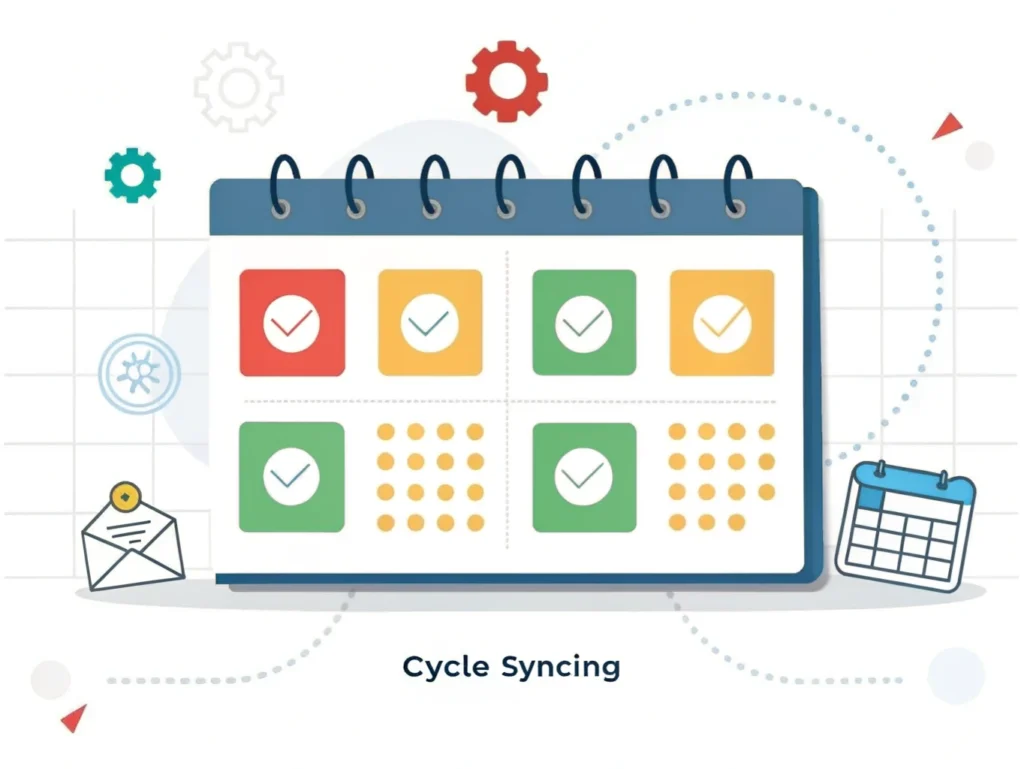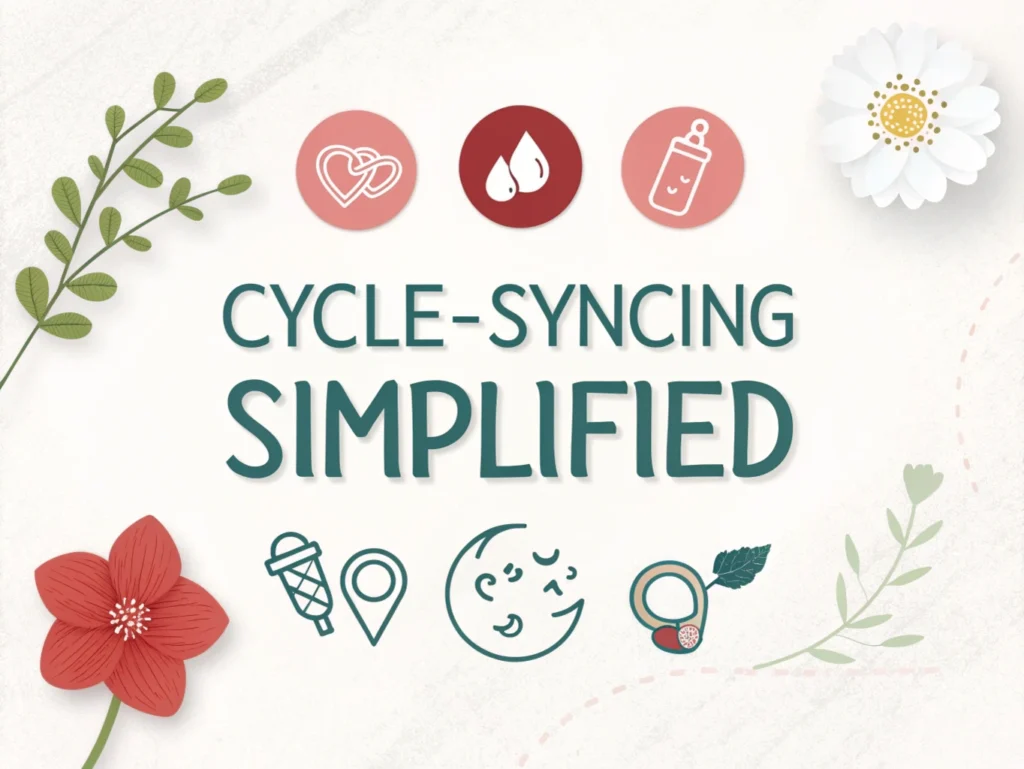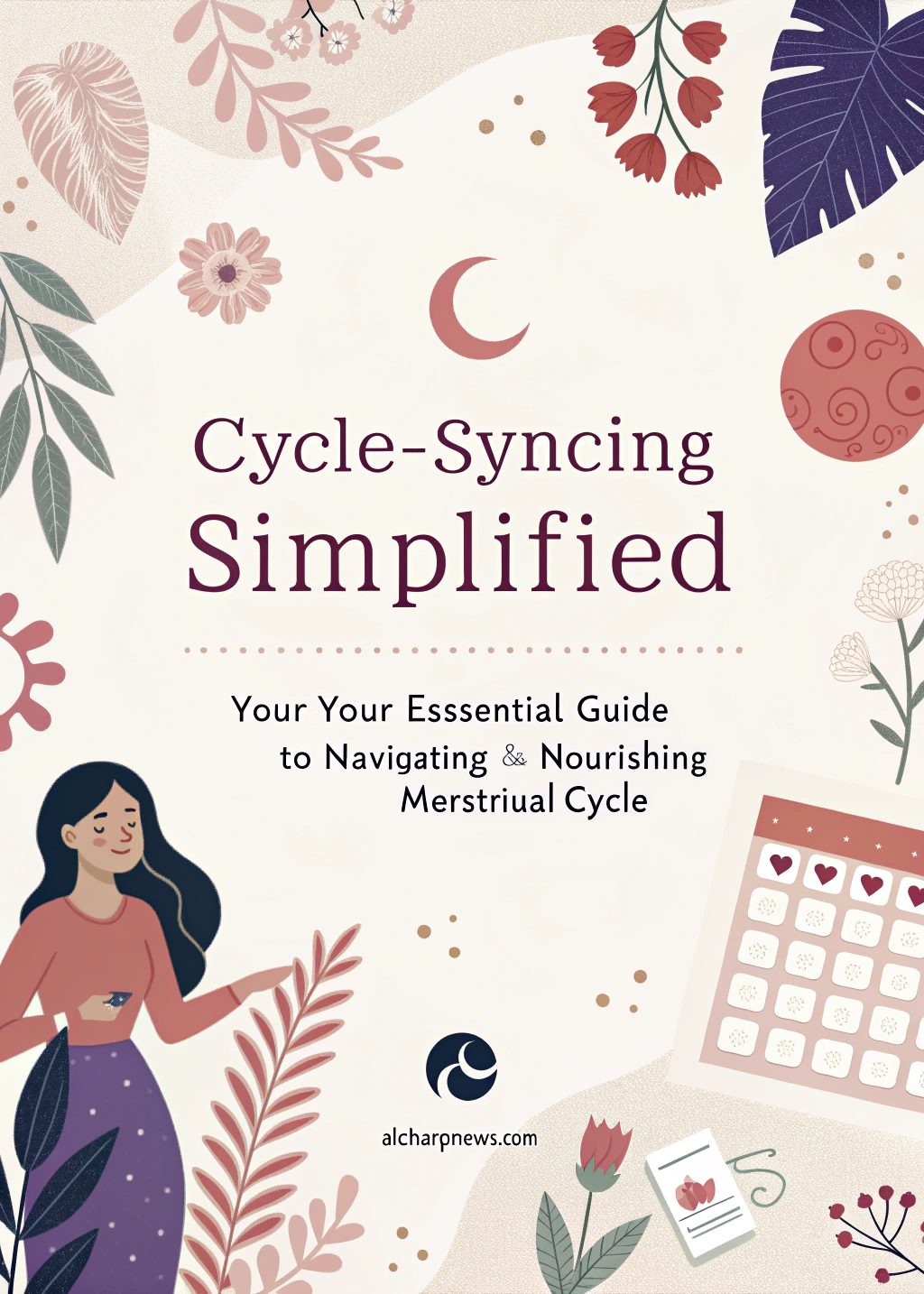Ever caught yourself wondering why one week you conquer mountains while the next leaves you craving solitude beneath blankets? These shifts aren’t random flukes – they’re your body’s sophisticated communication system at work. Throughout my journey with monthly hormonal ebbs and flows, discovering cycle-syncing transformed frustration into empowerment. Your menstrual cycle isn’t merely something to endure; it’s a roadmap to understanding your body’s changing needs and capabilities.
Table of contents

What is Cycle-Syncing? Understanding the Fundamentals
Cycle-syncing represents the practice of aligning your nutrition, exercise, productivity, and self-care rituals with your body’s natural hormonal fluctuations. Rather than fighting against your changing energy levels, this approach works harmoniously with them.
Your menstrual cycle divides into four distinct phases, each characterized by unique hormonal patterns that influence everything from your mood to your metabolic rate. By recognizing these patterns, you’ll unlock remarkable insights into optimizing your wellbeing throughout the month.
Women who embrace cycle-syncing frequently report reduced PMS symptoms, steadier energy levels, improved mood stability, and enhanced productivity. Perhaps most significantly, they develop a deeper connection with their bodies’ innate wisdom.
The Four Phases of Your Menstrual Cycle Explained
Phase 1 – Menstrual Phase (Days 1-5)
Your menstrual phase begins with the first day of bleeding. During this time, both estrogen and progesterone levels remain low. You might notice decreased energy, heightened intuition, and a natural tendency toward reflection.
This phase calls for gentleness. Your body works diligently to shed its uterine lining – an energy-intensive process. Honor this internal work by permitting yourself additional rest, scaling back social commitments, and embracing quieter activities that nourish rather than deplete.
Phase 2 – Follicular Phase (Days 6-13)
As bleeding concludes, you enter the follicular phase. Rising estrogen levels gradually restore your energy, creativity, and openness to new experiences. Many women describe this phase as feeling reborn – with increasing confidence and optimism appearing alongside physical vitality.
This represents your opportunity to initiate projects, brainstorm innovative solutions, and tackle challenges requiring fresh perspectives. Your brain chemistry during this phase particularly supports learning and creative thinking.
Phase 3 – Ovulatory Phase (Days 14-16)
Though brief, your ovulatory phase packs tremendous significance. Estrogen peaks while testosterone surges briefly, creating your monthly energy zenith. Communication skills shine, confidence soars, and social connections feel particularly rewarding.
Channel this natural charisma into presentations, important conversations, networking events, or social gatherings. Your body naturally supports outward expression and connection during these fertile days.
Phase 4 – Luteal Phase (Days 17-28)
Following ovulation, progesterone dominates your hormonal landscape. Your energy begins strong but gradually decreases as this phase progresses. Early luteal days suit detail-oriented tasks and project completion, while later days call for increasing self-care.
During the luteal phase’s second half, many women experience premenstrual symptoms. Supporting your body with proper nutrition, movement, and stress management proves especially crucial during this transitional time.
Cycle-Syncing Your Diet: Nourishing Foods for Each Phase
Your nutritional needs fluctuate significantly throughout your cycle. Strategic eating provides powerful support for hormonal balance.
Menstrual Phase Nutrition
During menstruation, focus on replenishing lost iron and providing anti-inflammatory support. Your body particularly benefits from:
| Food | Key Benefits |
|---|---|
| Dark leafy greens | Replenishes iron stores, provides magnesium for cramp relief |
| Beets | Supports blood building while reducing inflammation |
| Dark chocolate | Offers magnesium for mood support and muscle relaxation |

Follicular Phase Nutrition
As estrogen rises, support your liver’s detoxification pathways and egg quality with antioxidant-rich foods:
| Food | Key Benefits |
|---|---|
| Fresh berries | Protects developing eggs from oxidative damage |
| Flaxseeds | Provides gentle phytoestrogens supporting hormonal balance |
| Fermented foods | Promotes healthy estrogen metabolism |
Ovulatory Phase Nutrition
Your metabolism typically accelerates during ovulation. Lighter, hydrating foods support your heightened energy:
| Food | Key Benefits |
|---|---|
| Raw fruits | Provides enzymatic support and quick energy |
| Bell peppers | Delivers vitamin C for immune support |
| Avocados | Offers healthy fats for hormone production |
Luteal Phase Nutrition
As progesterone rises, your metabolism increases and blood sugar stability becomes crucial. Focus on:
| Food | Key Benefits |
|---|---|
| Sweet potatoes | Stabilizes blood sugar while supporting serotonin production |
| Turkey | Provides tryptophan for mood regulation |
| Sunflower seeds | Delivers vitamin E and selenium to reduce PMS |
Cycle-Syncing Your Workout Routine
Exercise becomes significantly more effective when aligned with your hormonal patterns. Your changing energy levels throughout the month provide natural guidance for optimizing physical activity.
During your menstrual phase, gentle movement like walking, stretching, or restorative yoga honors your lower energy while maintaining circulation. Your follicular phase welcomes gradually increasing intensity with strength training or dance as your energy builds.
Your ovulatory phase represents your physical peak – perfect for high-intensity interval training, challenging cardio sessions, or competitive activities. As you transition through your luteal phase, begin with moderate strength training, then gradually shift toward Pilates, swimming, or yoga as your period approaches.
This rhythmic approach prevents burnout while maximizing results. Women who exercise according to their cycles frequently report improved performance, faster recovery, and greater consistency in their fitness routines.
Getting Started with Cycle-Syncing: Your Action Plan
Begin your cycle-syncing journey with these straightforward steps:
- Track your cycle: Document your bleeding days, energy levels, mood patterns, and physical symptoms. Apps like Clue or Flo provide helpful frameworks, though a simple journal works beautifully too.
- Start with one area: Rather than overhauling everything simultaneously, begin with either nutrition, exercise, or productivity planning. Once comfortable, gradually incorporate additional elements.
- Listen to your body: While cycle patterns provide useful guidelines, your personal experience remains paramount. Adjust recommendations based on your unique signals and needs.
Remember that irregular cycles don’t prevent successful cycle-syncing. Focus on identifying your current phase through symptom tracking rather than counting days.
Conclusion: Embracing Your Cyclic Nature
Cycle-syncing opens the door to profound self-understanding. By honoring your body’s natural rhythms, you transform your menstrual cycle from monthly inconvenience into powerful ally. This approach doesn’t demand perfection – even small adjustments yield meaningful benefits.
Your cyclic nature offers distinctive strengths across each phase. When embraced rather than resisted, these changing energies provide remarkable versatility and depth to your experiences. Consider this your invitation to a more intuitive, empowered relationship with your body’s natural wisdom.
Ready to deepen your cycle-syncing journey? Start tracking your patterns today, and witness how this simple practice transforms your relationship with your menstrual cycle. Share your experiences or questions below – your insights might help another woman discover her own rhythmic power.

Frequently Asked Questions About Cycle-Syncing
What exactly is cycle-syncing and how does it improve my menstrual health?
Cycle-syncing simplified means aligning your food choices, exercise routines, work priorities, and self-care practices with your menstrual phases. This approach typically reduces period discomfort, stabilizes mood swings, enhances energy management, and deepens body awareness.
Can I practice cycle-syncing if I’m on hormonal birth control?
Absolutely. While hormonal contraceptives alter your natural cycle, modified cycle-syncing still offers benefits. Focus on body literacy, intentional self-care, and energy management rather than strictly following phase-based protocols.
How long does it take to see benefits from cycle-syncing?
Most women notice improvements within 2-3 cycles of consistent practice. Simple awareness often brings immediate insights, while hormonal balance benefits typically develop over several months of dedicated alignment.
Is there scientific evidence supporting cycle-syncing simplified approaches?
Research clearly demonstrates how hormonal fluctuations affect metabolism, cognitive function, immune response, and physical capabilities. While “cycle-syncing” terminology remains relatively new, the physiological principles behind this practice stand firmly rooted in endocrinology and women’s health research.

